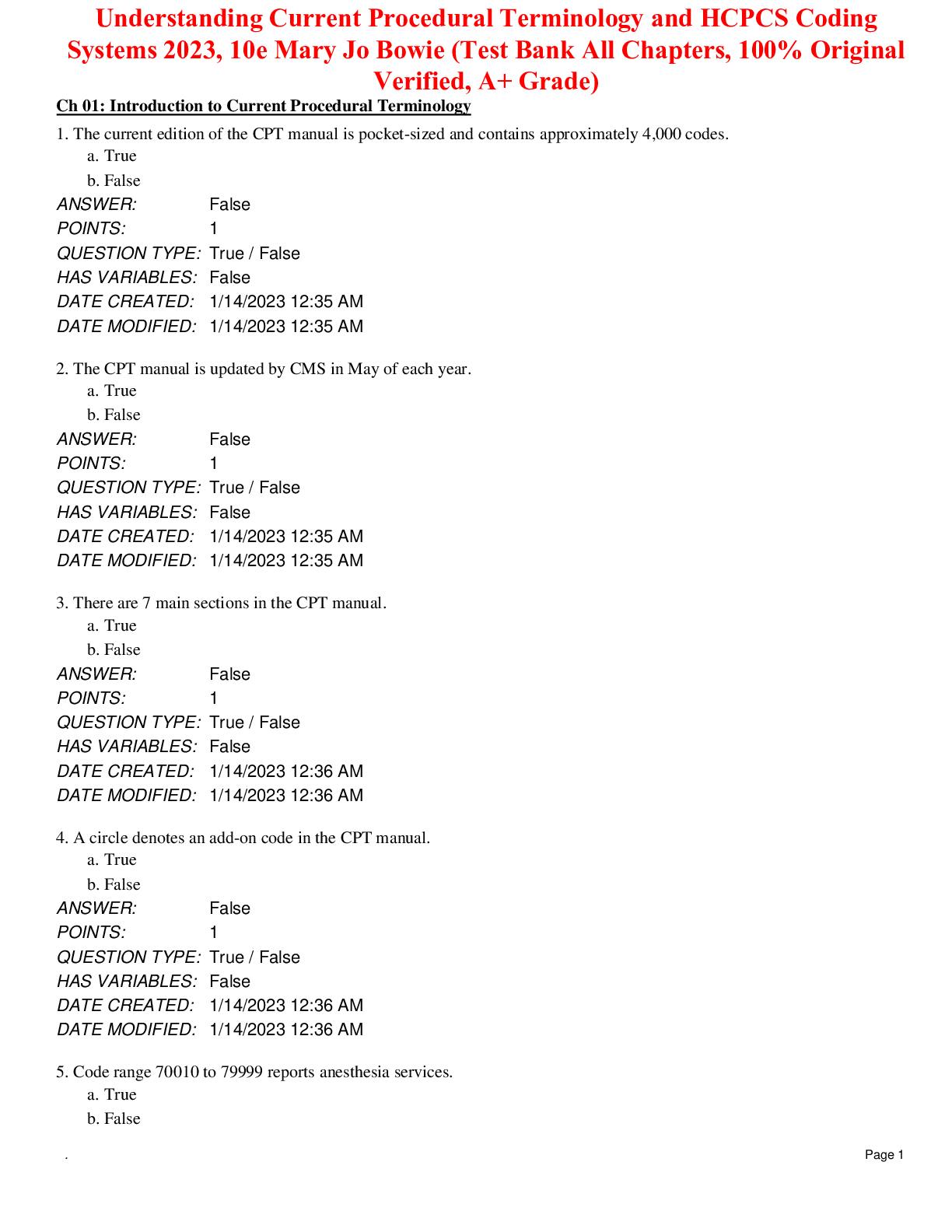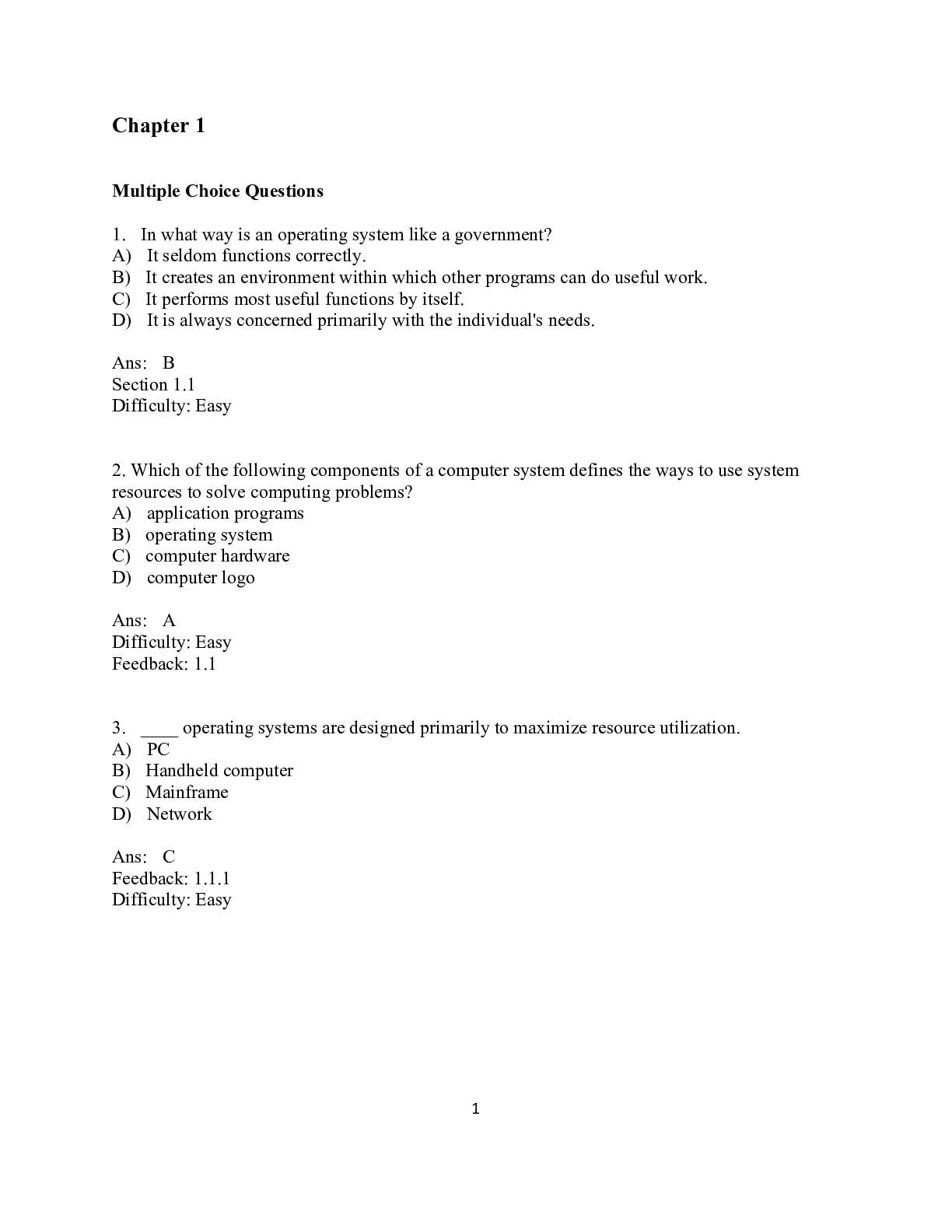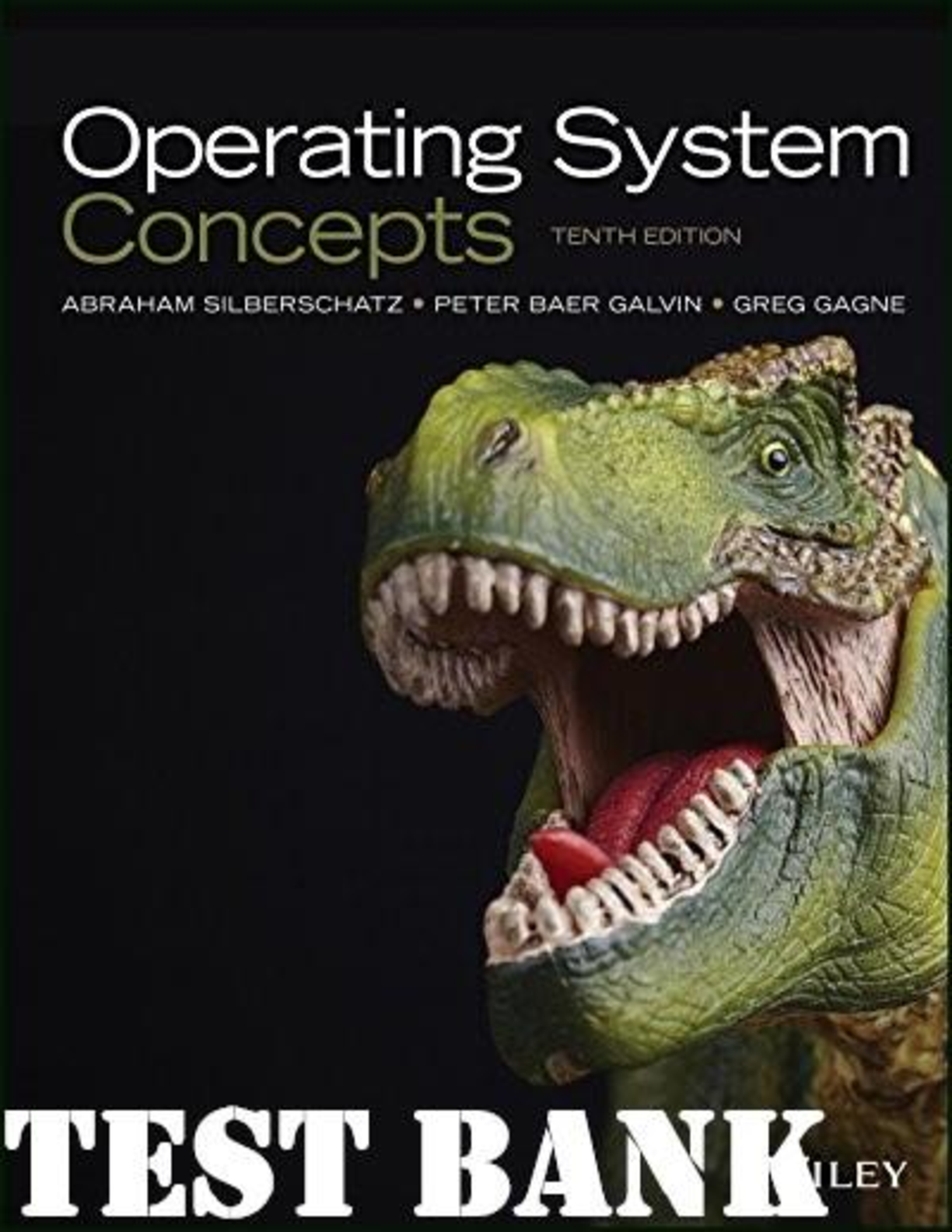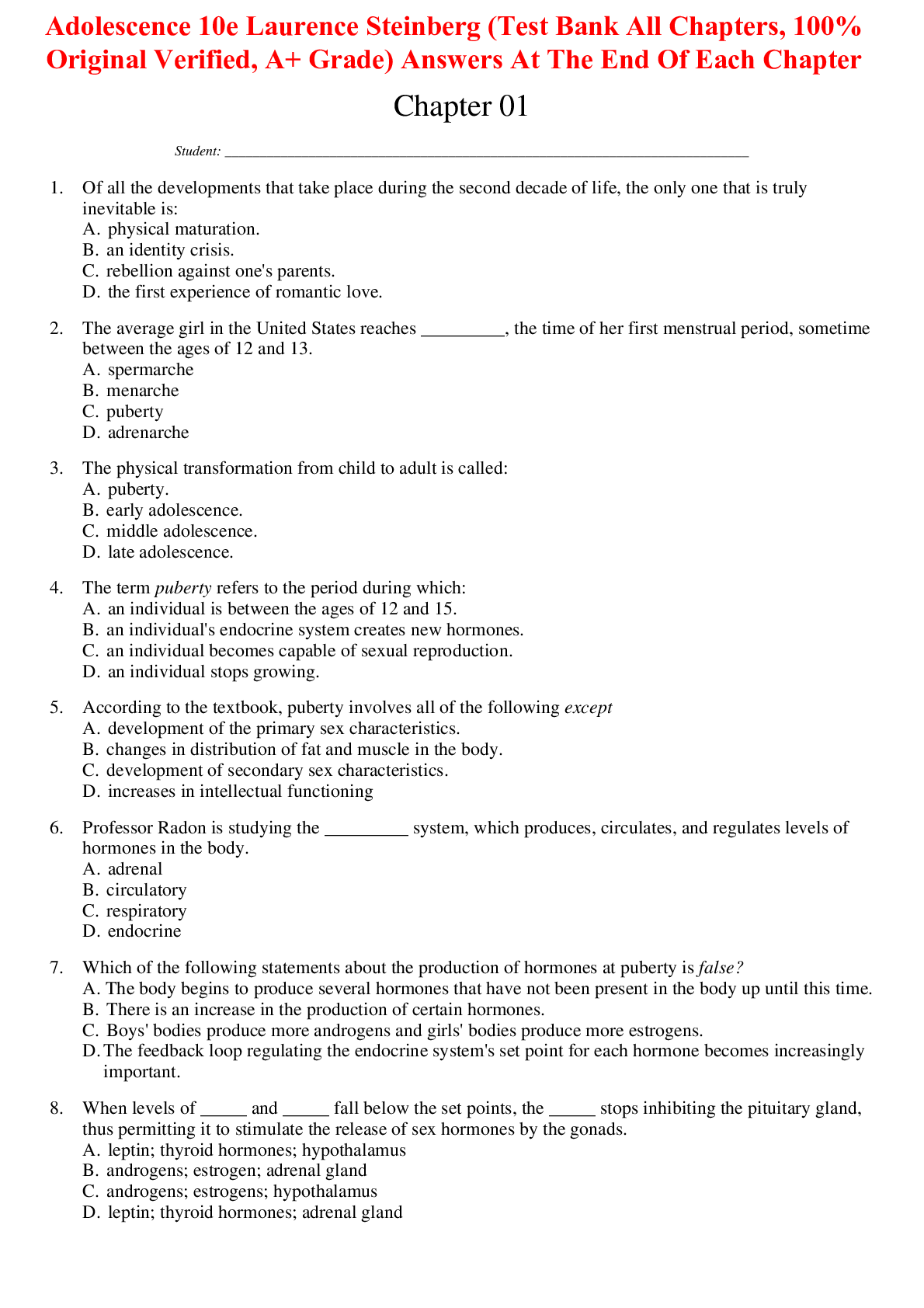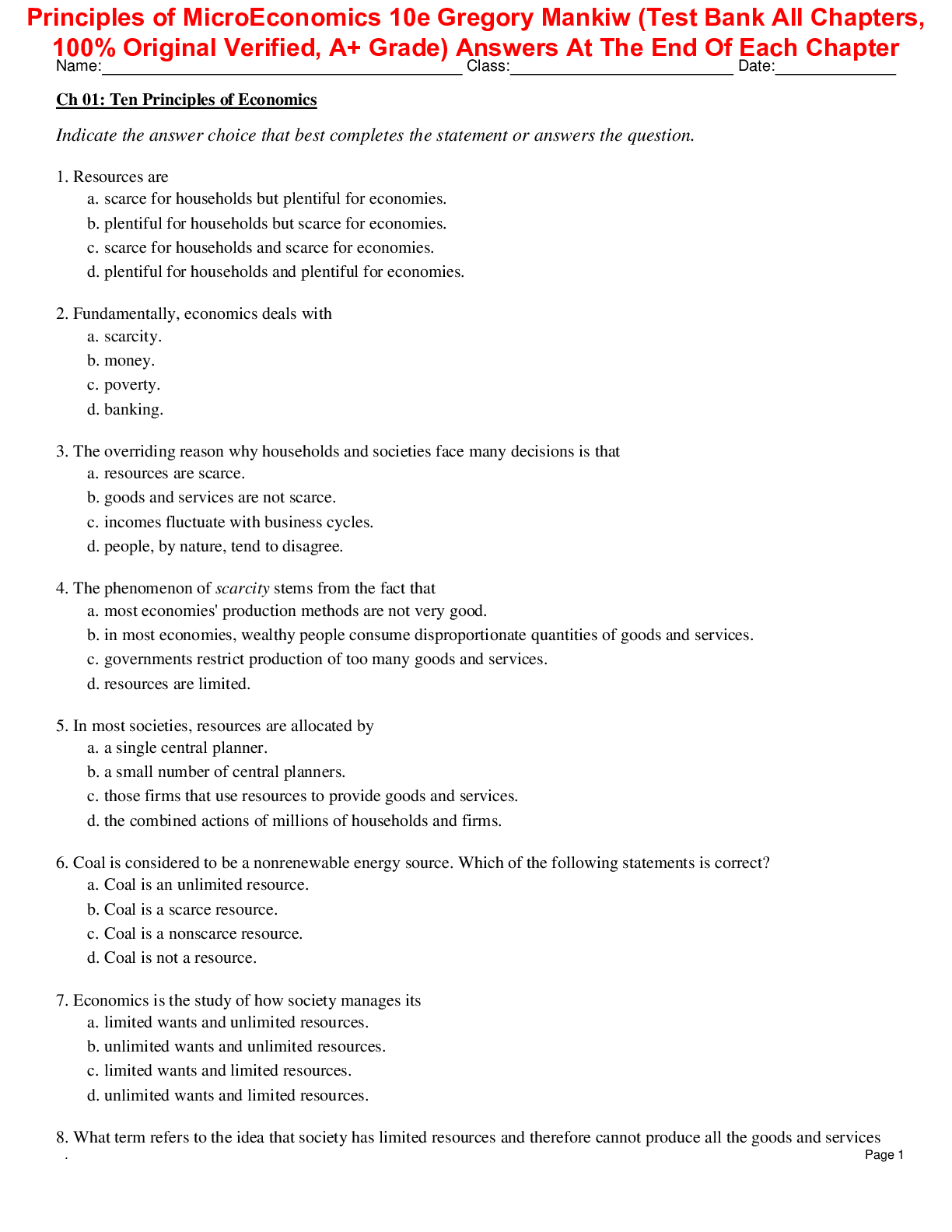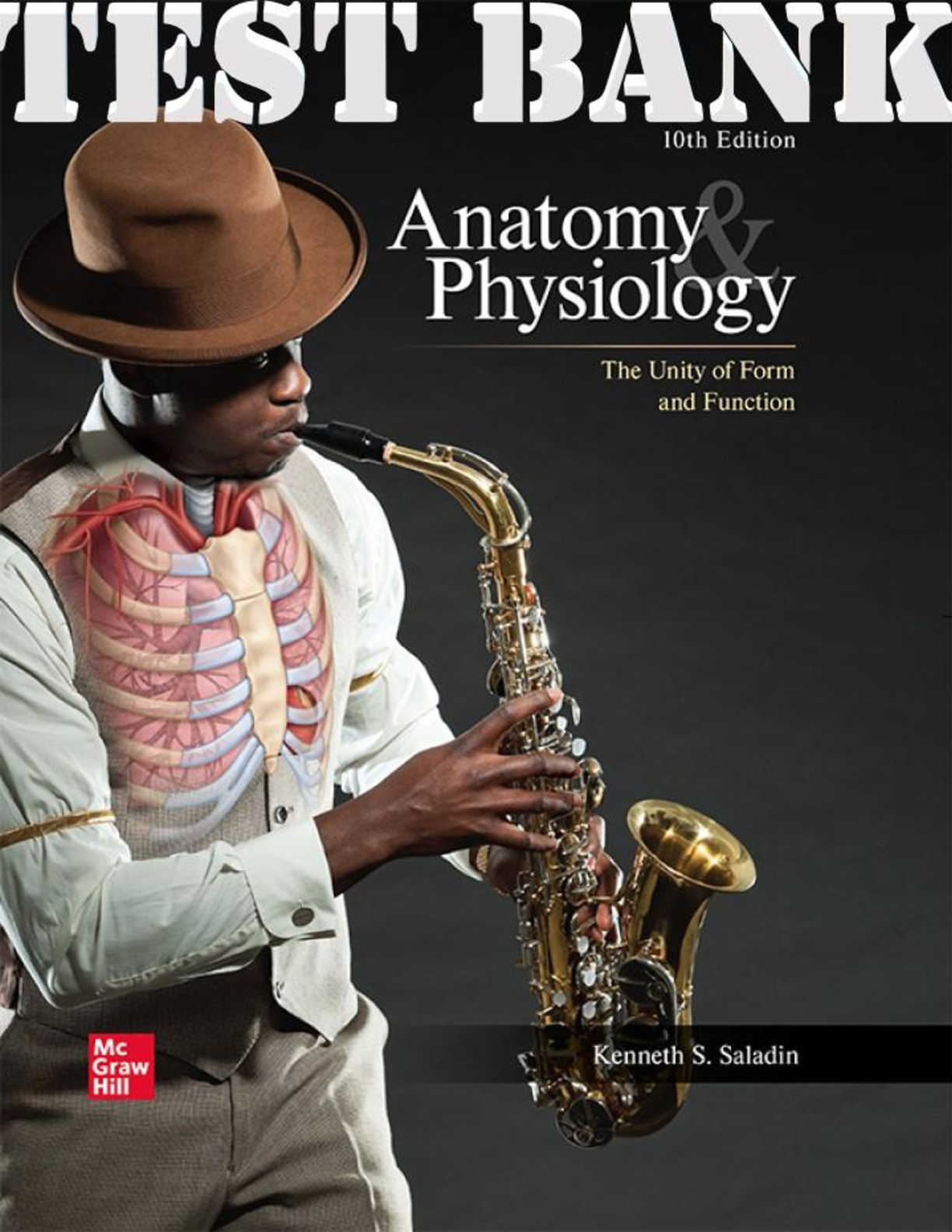Health Care > TEST BANK > Chapter 4- Cell and Tissue Characteristics TEST BANK FOR PORTH’S PATHOPHYSIOLOGY 10TH EDITION BY N (All)
Chapter 4- Cell and Tissue Characteristics TEST BANK FOR PORTH’S PATHOPHYSIOLOGY 10TH EDITION BY NORRIS
Document Content and Description Below
Chapter 4- Cell and Tissue Characteristics TestBank 1. During a discussion on cellular components and their function, a student asked the instructor the purpose of messenger RNA (mRNA). Of the follo... wing, which is the most accurate answer? A) Transports amino acids to the site of protein synthesis B) Acts as an inner nuclear support membrane for a rigid network of protein filaments that bind DNA to the nucleus C) Performs an active role of protein synthesis, where mRNA molecules direct the assembly of proteins on ribosomes to the cytoplasm D) Assists cells in forming neoplastic progression by altering the response of chromatin in the nuclear matrix Ans: Feedback: The nucleus is the site for the synthesis of three types of RNA that move to the cytoplasm and carry out the actual synthesis of proteins. Messenger RNA copies and carries the DNA instructions for protein synthesis to the cytoplasm. Ribosomal RNA is the site of actual protein synthesis; transfer RNA transports amino acids to the site of protein synthesis. 2. The nurse is providing care for a client with a diagnosis of cirrhosis, and she notes that the client's sclerae are jaundiced. The nurse recalls that jaundice is a pigment that can accumulate in which part of the cell? A) Nucleus B) Cytoplasm C) Golgi apparatus D) Rough endoplasmic reticulum (ER) Ans: Feedback: Pigments such as bilirubin and melanin can accumulate in the cytoplasm, resulting in the characteristic yellow skin tones associated with jaundice. Pigments do not tend to accumulate in the nucleus, Golgi apparatus, or rough ER. 3. A 14-year-old female has been experiencing severe internal cramps in the region of the pelvis and weight loss.She has been admitted with rectal bleeding.The physician has diagnosed her with inflammatory bowel disease (IBD). She asks the nurse what causes this disease. The nurse will base her response knowing that IBD has been linked to A) liver involvement in faulty glycogen stores. B) endoplasmic reticulum stress in the gastrointestinal system. C) oversecretion of insulin from the beta cells in the pancreas. D) infiltration of the gastrointestinal tract by bacterial toxins. Ans: Feedback: Researchers are determining links between the endoplasmic reticulum (ER) and various disease processes. For examples, ER stress in the GI system has been found to be related to intestinal inflammations such as those occur with inflammatory bowel disease. The smooth ER of the liver is involved in glycogen stores. Insulin is synthesized as a large, inactive proinsulin molecule cut apart to produce a smaller, active insulin molecule within the Golgi complex of the beta cells. Bacterial toxins have exploited the retrograde transport mechanism. 4. A professor is teaching a group of students about the role of mitochondria within the cell. Which of the following statements is true of mitochondria? A) They are the site of adenosine triphosphate (ATP) production. B) The number of mitochondria in a cell is equal to the number of nuclei. C) They are replicated within the smooth endoplasmic reticulum (ER). D) Mitochondrial DNA is inherited patrilineally. Ans: Feedback: Consistent with their characterization as the “power plants” of the cell, mitochondria are the site of ATP synthesis for the cell. The number of mitochondria in a given cell type varies, according to the energy demands of the particular cell. They are self-replicating rather than being produced in the smooth ER, and they are inherited matrilineally. 5. A patient has been diagnosed with a neurodegenerative disease called multiple sclerosis (MS). The physician explains to the patient that this disease may be caused by dysregulated apoptosis. Later that day, the patient asks the nurse what this means. The nurse should reply, A) “The cells around your nerves don't know how to die correctly.” B) “The cytoplasm should neutralize the various apoptotic inhibitors but isn't working correctly.” C) “Dysregulated apoptosis has caused an excessive rate of programmed cell death along the neuropathways.” D) “There is an inappropriately low rate of apoptosis occurring within the cells.” Ans: Feedback: Dysregulated apoptosis can mean too little or too much and has been implicated in neurodegenerative diseases, in which there is an increased or excessive rate of apoptosis. 6. A patient experiencing immotile cilia syndrome should be frequently assessed by the nurse for which priority complication? A) Epistaxis resulting from loss of cilia in the nasal passageway B) Bronchiectasis due to interferences with clearance of inhaled bacteria along the respiratory tract C) Sterility caused by inability of the sperm to swim downstream D) Inability to hear soft sounds related to kinocilium on the hair cells in the inner ear Ans: Feedback: Immotile cilia syndrome immobilizes the cilia of the respiratory tract, thus interfering with clearance of inhaled bacteria, leading to the chronic lung disease called bronchiectasis. 7. A community health care worker is explaining to a group of factory workers the importance of wearing gloves when working with strong chemicals such as turpentine and paint thinner. Which of the following characteristics of cell membranes underlies the nurse's teaching? A) Cell membranes are impermeable to all but lipid-soluble substances. B) Cell membranes have a hydrophilic head and a hydrophobic tail. C) Cell membranes contain receptors for hormones and biologically active substances. D) Transmembrane proteins can pass through the cell membrane into the intracellular environment. Ans: Feedback: Because cell membranes are soluble to some lipid-soluble substances such as organic solvents, such substances should be kept from direct contact with skin cells. The facts that cell membranes have a hydrophilic head and a hydrophobic tail and contain receptors for hormones and biologically active substances do not have a bearing on the nurse's teaching. While transmembrane proteins can indeed pass into the intracellular environment, the nurse is not referring to proteins in the teaching. 8. The nurse is explaining the workings of selective serotonin reuptake inhibitors to a client with a diagnosis of depression. Within the teaching, the nurse mentions that in the nervous system, the transmission of information by neurotransmitters is A) synaptic signaling. B) endocrine signaling. C) autocrine signaling. D) paracrine signaling. Ans: Feedback: Synaptic signaling occurs in the nervous system, where neurotransmitters act only on adjacent nerve cells through special contact areas called synapses. Endocrine signaling relies on hormones carried in the bloodstream to cells throughout the body. Autocrine signaling occurs when a cell releases a chemical into the extracellular fluid that affects its own activity. With paracrine signaling, enzymes rapidly metabolize the chemical mediators and therefore act mainly on nearby cells. 9. The nurse is teaching a group of colleagues about the cell division cycle as background to oncology nursing. Which of the following statements is true of the cell cycle? A) Some cells lack a G0 phase. B) Mitosis is a process that occurs in steps over 1 to 2 days. C) The two broad phases of the cell cycle are mitosis and synthesis. D) Nondividing cells such as nerve cells are said to be in the S0 phase. Ans: Feedback: While consisting of several stages, cell division can be broadly divided into the two phases of mitosis and synthesis. Some cells lack a G1 stage, not a G0 phase, and mitosis is a fluid and continuous process over 1 to 1½ hours. Nondividing cells are said to be in the G0 phase. 10. A 62-year-old male collapsed while unloading a truck of heavy sacks of feed for his cattle. When he arrived in the emergency department, blood gases reveal a slightly acidic blood sample. The nurse caring for this patient is not surprise with this result based on which of the following pathophysiological rationales? A) The skeletal muscles are producing large amounts of lactic acid and release it into the bloodstream during heavy work/exercise. B) During exercise, catabolism will break down stored nutrients and body tissues to produce energy. C) Large amounts of free energy are released when ATP is hydrolyzed and then converted into adenosine diphosphate. D) Within the mitochondria, energy from reduction of oxygen is used for phosphorylation of ADP to ATP. Ans: Feedback: Heart muscle is efficient in converting lactic acid to pyruvic acid and then using the pyruvic acid for fuel. Pyruvic acid is an important source of fuel for the heart during heavy exercise when the skeletal muscles are producing large amounts of lactic acid and releasing it into the bloodstream. Therefore, the blood sample would be acidic by nature. Catabolism will break down stored nutrients and body tissues to produce energy. ATP conversion into ADP and phosphorylation of ADP to ATP are both aerobic metabolism processes. 11. The health caregiver is explaining the rationale for administering a hypotonic intravenous solution (lower concentration of solutes in its surroundings) to a client. Which of the following mechanisms of membrane transport most likely underlies this action? A) Facilitated diffusion B) Active transport C) Diffusion D) Osmosis Ans: Feedback: The fact that body cells are permeable to water but not all solute particles, and the amount of solute relative to water content, underlies the choice of intravenous fluid, in health care. Water moves through water channels in a semipermeable membrane along a concentration gradient, moving from an area of higher to an area of lower concentration. This is the essence of osmosis, and the other mechanisms of membrane transport do not have as significant a bearing on the nurse's action. 12. A nurse is teaching a client with a recent diagnosis of diabetes about the roles that glucose and insulin play in the disease pathology and the fact that glucose must enter the body cell in order to provide energy for the client. The nurse knows that which of the following processes allows glucose to enter body cells? A) Osmosis B) Facilitated diffusion C) Active transport D) Diffusion Ans: Feedback: Facilitated diffusion involves the movement of a substance like glucose from an area of high concentration, such as the bloodstream, to an area of low concentration, such as the intracellular space, through the use of a transport protein. Osmosis, active transport, and diffusion do not bring about the movement of glucose into body cells. 13. An end-stage renal disease patient has been on peritoneal dialysis at home. Based on his lab work, he regulates the type of solution to infuse into his abdomen. When there is a high concentration of potassium inside the cell (hyperkalemia), the solution infused has a lower concentration so that the potassium ions will diffuse outward. At this point, the cellular membrane is said to be A) at equilibrium potential in which no net movement of ions occurs. B) charged with high voltage. C) filled with positive current. D) polarized because of the presence of a negative membrane potential. Ans: Feedback: Because of the large concentration gradient existing across the cell membrane, potassium ions tend to diffuse outward. As they do so, they carry their positive charges with them, causing the inside to become negative in relation to the outside. This new potential difference repels further outward movement of the positively charged potassium ion. The membrane is said to be polarized. 14. A student asks the instructor about the origins of different tissues and their cellular origins during the process of development. Which of the instructor's following statements best describes the process of cell differentiation? A) “Cells of the hematopoietic system produce the appropriate body cells that are required at each stage of development.” B) “A single stem cell differentiates into approximately 200 different types of cells.” C) “A fertilized ovum undergoes a series of divisions, yielding many different cell types.” D) “Cells differentiate into necessary body cells peaking after conception and ceasing near the time of birth.” Ans: Feedback: Cell differentiation and consequent tissue types are the outcome of the series of cell divisions that occur in the fertilized ovum. It originates neither with a single stem cell nor in the hematopoietic system. Stem cells allow for limited differentiation throughout the life span, not only antepartum. 15. A nurse is providing care for a client with a diagnosis of Crohn disease. The nurse recognizes the fact that the disease involves the inflammation and irritation of the intestinal lining. Which of the following types of tissue is most likely involved in the client's pathology? A) Simple columnar epithelium B) Glandular epithelium C) Simple cuboidal epithelium D) Stratified epithelium Ans: Feedback: Simple columnar epithelium lines the intestine and has cilia and mucus-secreting goblet cells. The intestinal tract does not consist of glandular epithelium, simple cuboidal epithelium, or stratified epithelium. 16. During a crime scene investigation, the coroner confirms that rigor mortis has set in. This helps to confirm an approximate time of death. The forensic nurse can explain this process (rigor mortis) to a group of students based on the fact that A) troponin is being prevented from forming a cross-bridge between the actin and myosin. B) activated by ATP, cross-bridges become attached to the actin filament. C) the myosin head catalyzes the breakdown of ATP to provide the energy need so that a cross-bridge can be formed. D) at death, the body is unable to complete the actin/myosin cycle and release the coupling between the myosin and actin, creating a state of muscular contration. Ans: Feedback: As the muscle begins to degenerate after death, the sarcoplasmic cisternae release their calcium ions, which enable the myosin heads to combine with their sites on the actin molecule. As ATP supplies diminish, no energy source is available to start the normal interaction between the actin and myosin, and the muscle is in a state of rigor until further degeneration destroys the cross-bridges between the actin and myosin. 17. The homecare nurse is making a home visit to a 51-year-old female client with a long-standing diagnosis of multiple sclerosis. The nurse knows that the muscle wasting and weakness associated with the disease process are ultimately manifested as a failure of what normal process in muscle tissue? A) The contraction of the epimysium B) The surrounding of fascicles by perimysium C) Thick myosin and thin actin filaments sliding over each other D) The contraction of fascicles within myofibrils Ans: Feedback: The contraction of skeletal muscle tissue can be characterized as the sliding action of myosin and actin. Epimysium surrounds and plays a supportive role in the skeletal muscle, and perimysium similarly provides support but does not actively produce locomotion. Myofibrils are found within fascicles, not the opposite. 18. An instructor is explaining to a group of students the way in which muscles and their associated tendons can be so strongly attached. The instructor makes references to the role of the basal lamina. Which of the following statements most accurately captures an aspect of the basal lamina? A) It is produced by the connective tissue adjacent to it. B) It is present where connective tissue contacts the tissue it supports. C) It is found solely between connective tissue and muscle fibers. D) It is also known as the basement membrane. Ans: Feedback: The basal lamina is found where connective tissue is in contact with the tissue that it provides support for. It is produced by epithelial cells and is found on Schwann cells, adipose tissue, and other sites apart from muscle fibers. It is not synonymous with the basement membrane, which consists of the combination of basal lamina and the reticular layer. 19. A caregiver is working with a client who is having poorly controlled pain due to shingles. The associate pain travels to the client's nervous system via A) synapses. B) axons. C) afferent neurons. D) efferent neurons. Ans: Feedback: Afferent or sensory neurons carry information toward the CNS; they are involved in the reception of sensory information from the external environment and from within the body. Efferent or motor neurons carry information away from the CNS; they are needed for control of muscle fibers and endocrine and exocrine glands. 20. A 6-year-old child cuts his leg while playing outside. An inflammatory process begins the healing process by moving leukocytes and platelets through the endothelial lining of blood vessels. This process occurs because of which extracellular tissue component? A) Extracellular matrix B) Glycosaminoglycans C) Selectins D) Cadherins Ans: Feedback: Selectins are found on activated endothelial cells of blood vessels, on leukocytes, and on platelets. They, together with integrins and immunoglobulins, participate in leukocyte movement through the endothelial lining of blood vessels during inflammation. Cadherins link parts of the internal cytoskeleton (actin and catenins) with extracellular cadherins of an adjacent cell. Glycosaminoglycans are one of the components of the extracellular matrix. [Show More]
Last updated: 1 year ago
Preview 1 out of 10 pages
Instant download
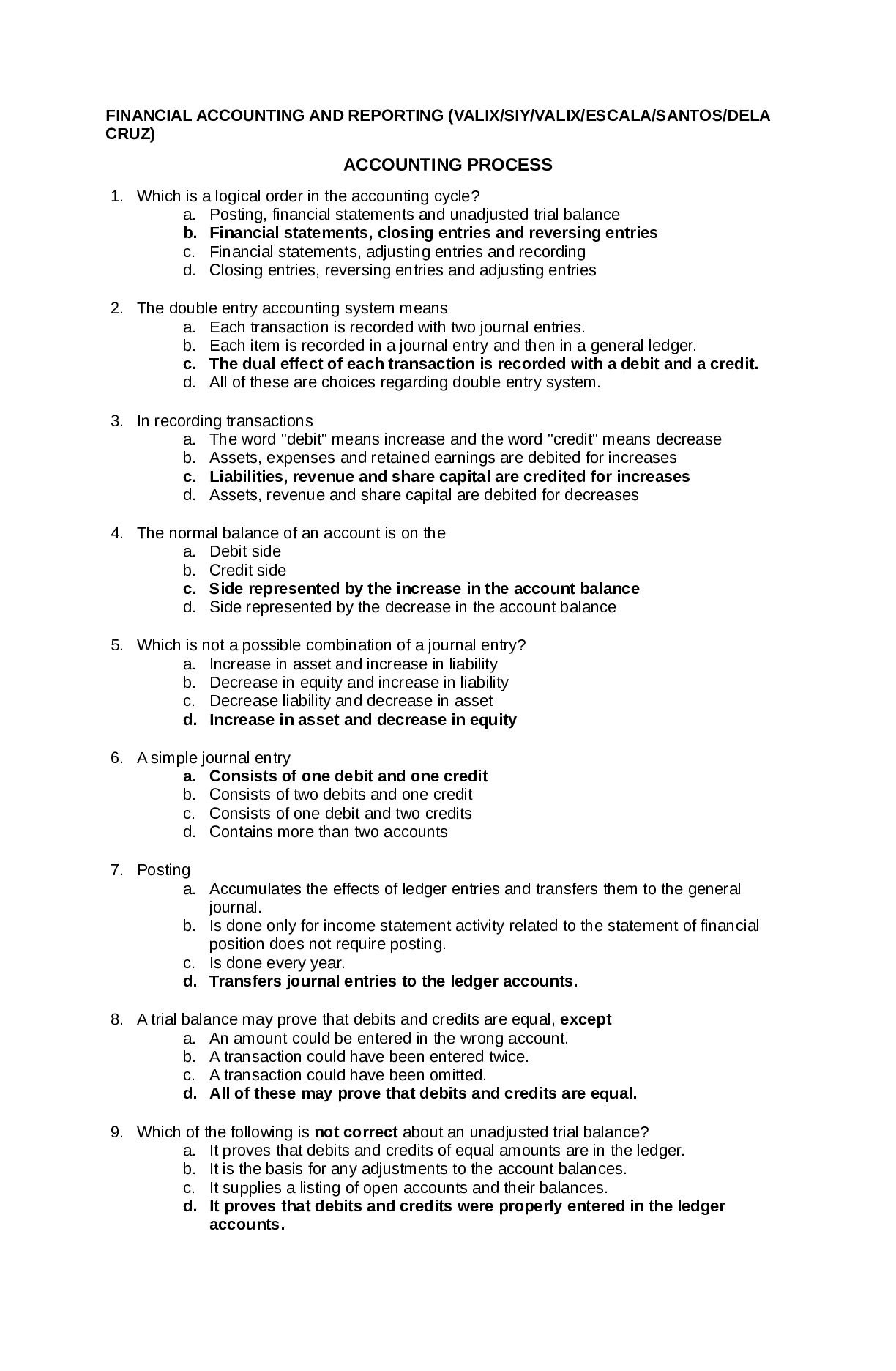
Instant download
Reviews( 1 )

by QUIZBANK · 3 years ago
Document information
Connected school, study & course
About the document
Uploaded On
Feb 28, 2021
Number of pages
10
Written in
Additional information
This document has been written for:
Uploaded
Feb 28, 2021
Downloads
1
Views
48



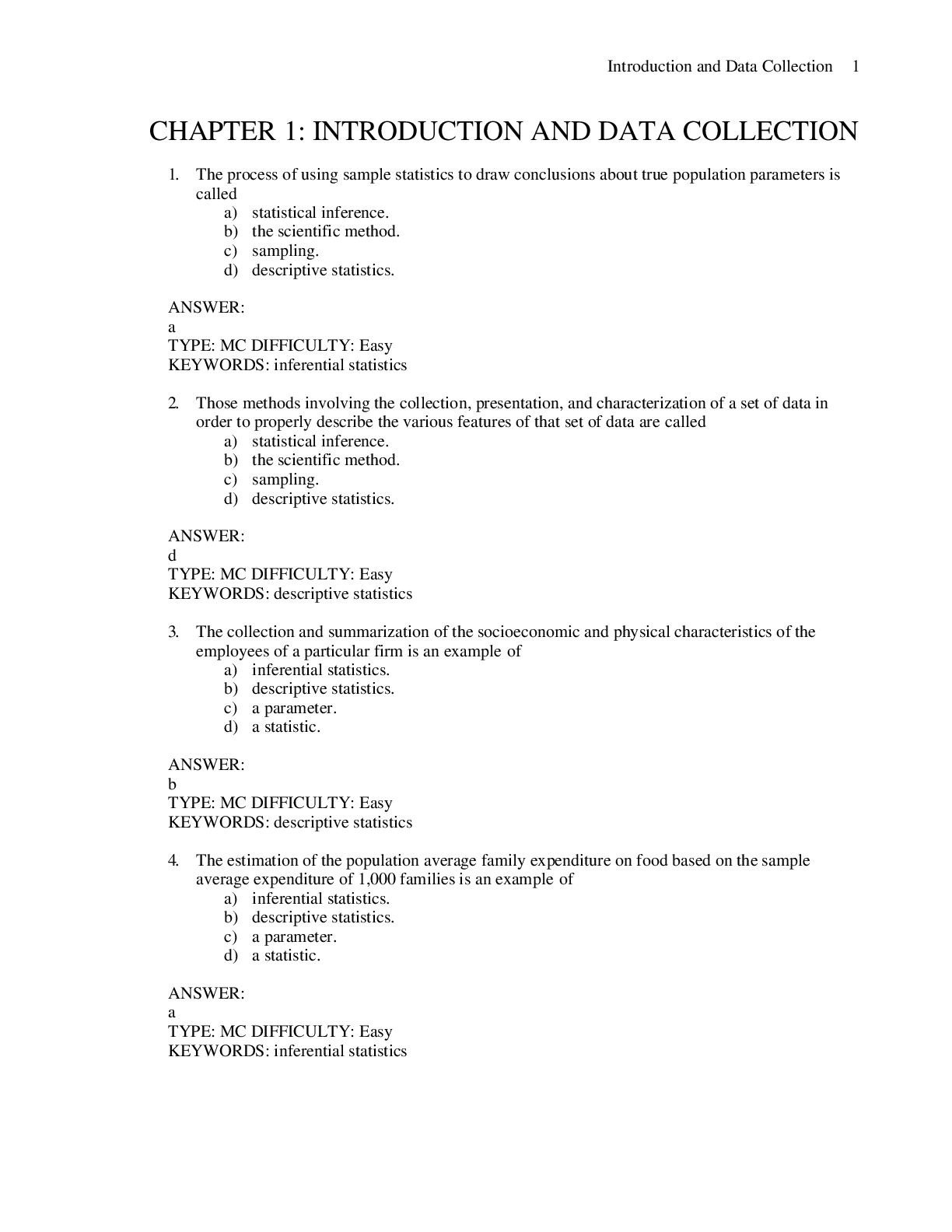



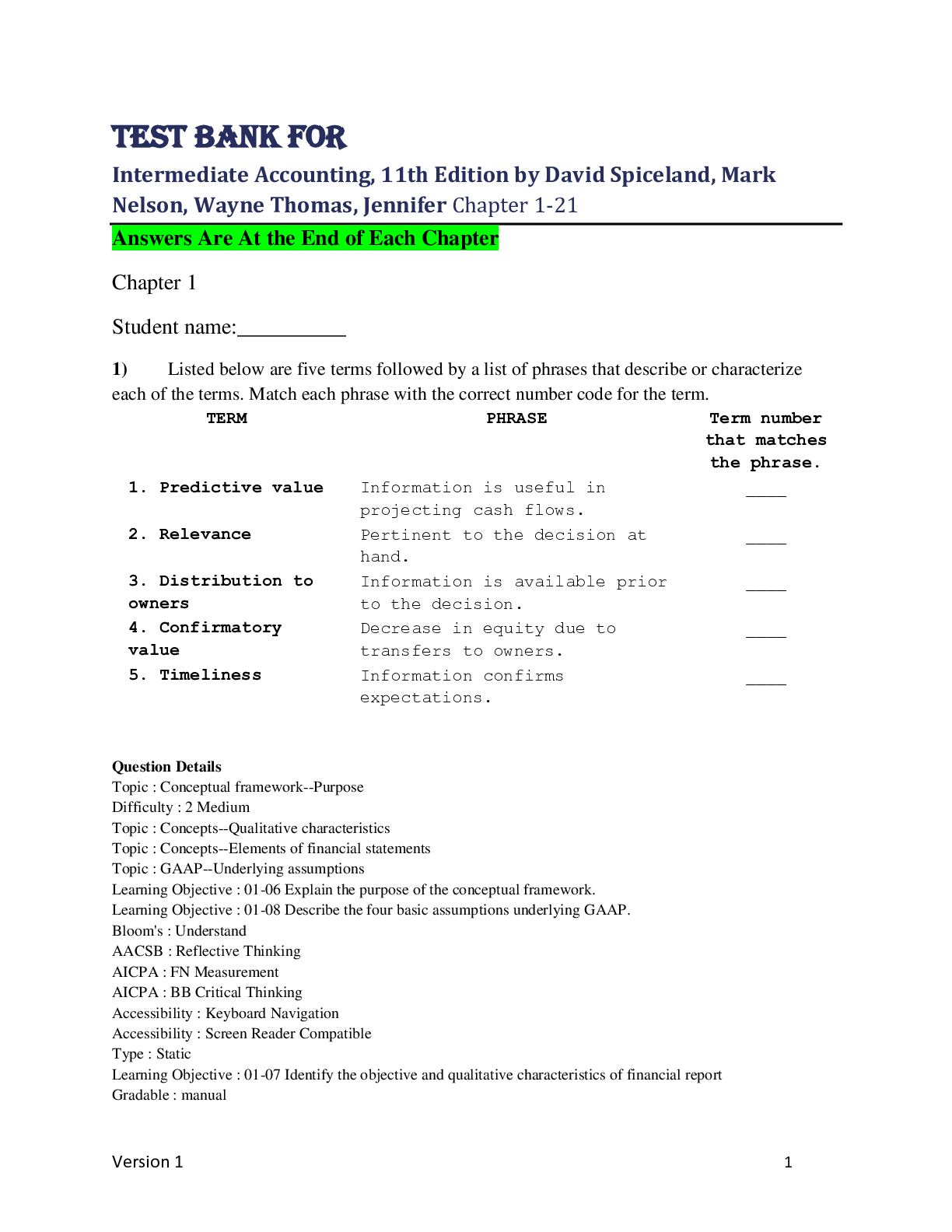
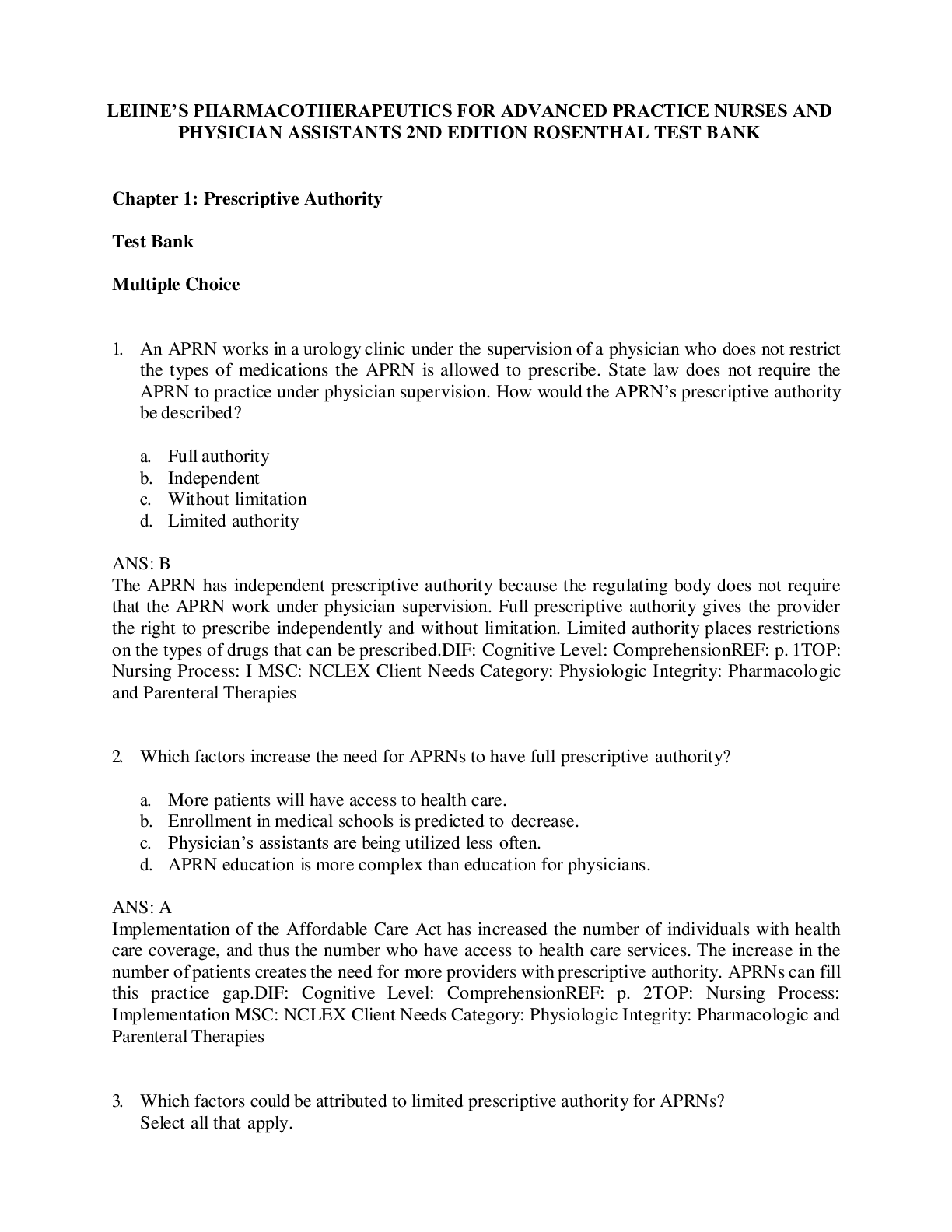
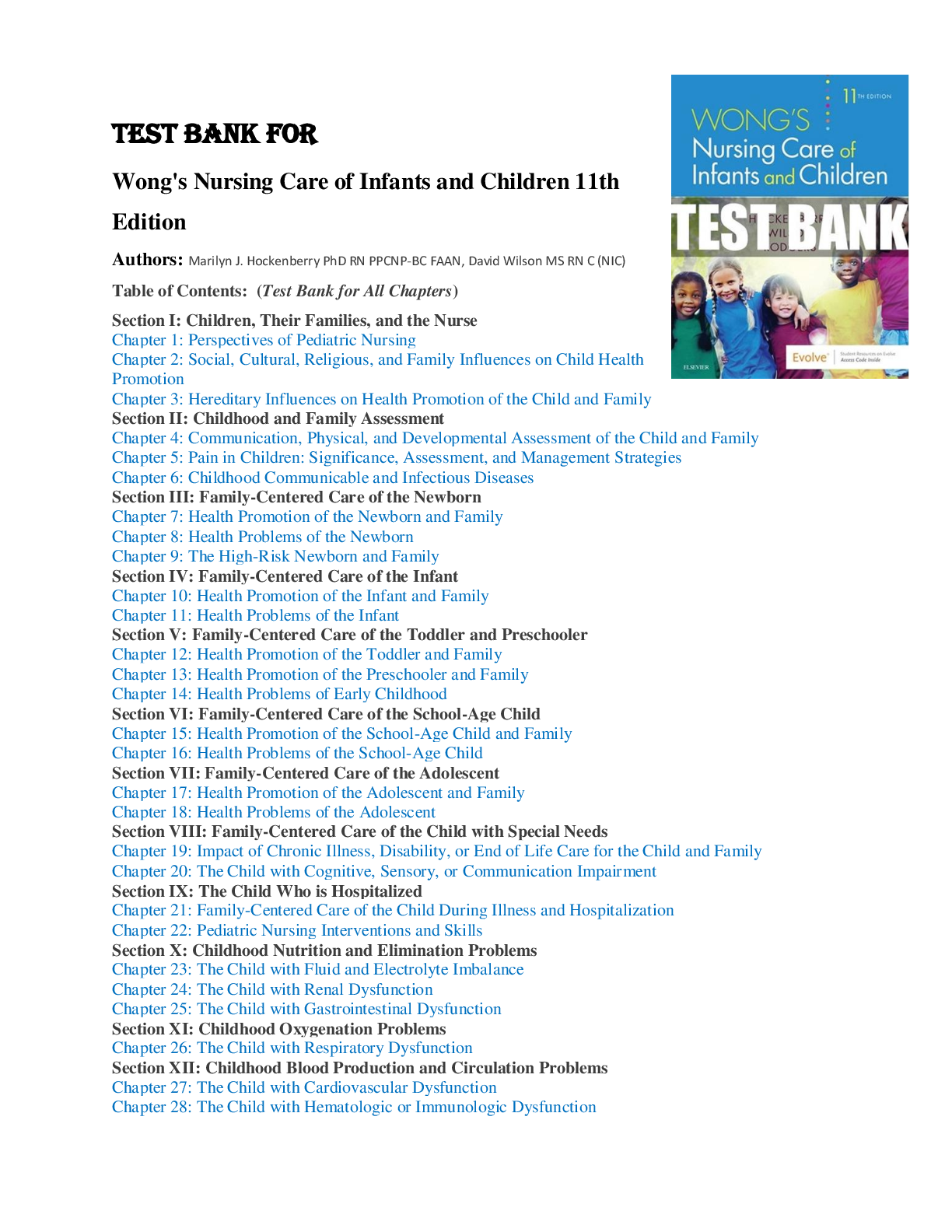
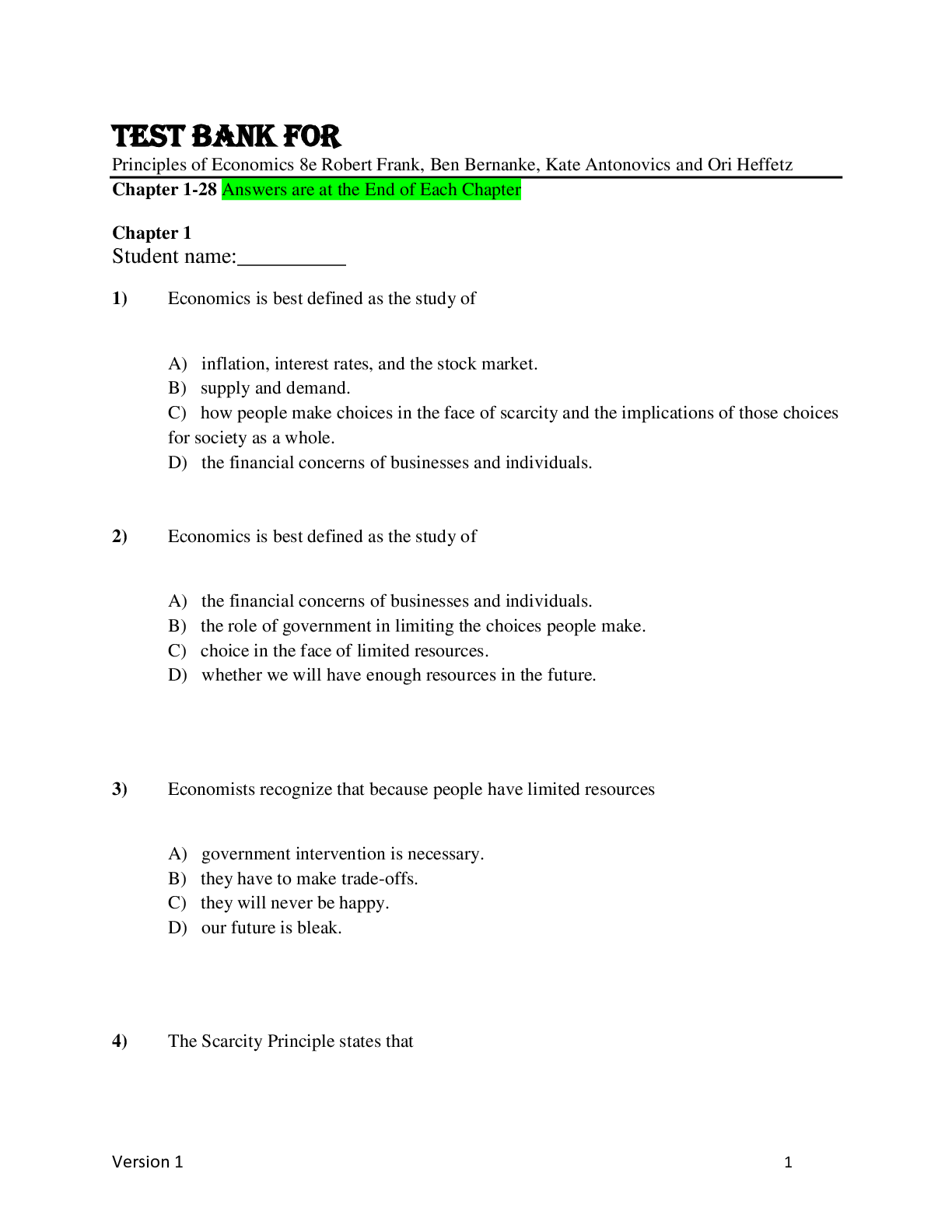

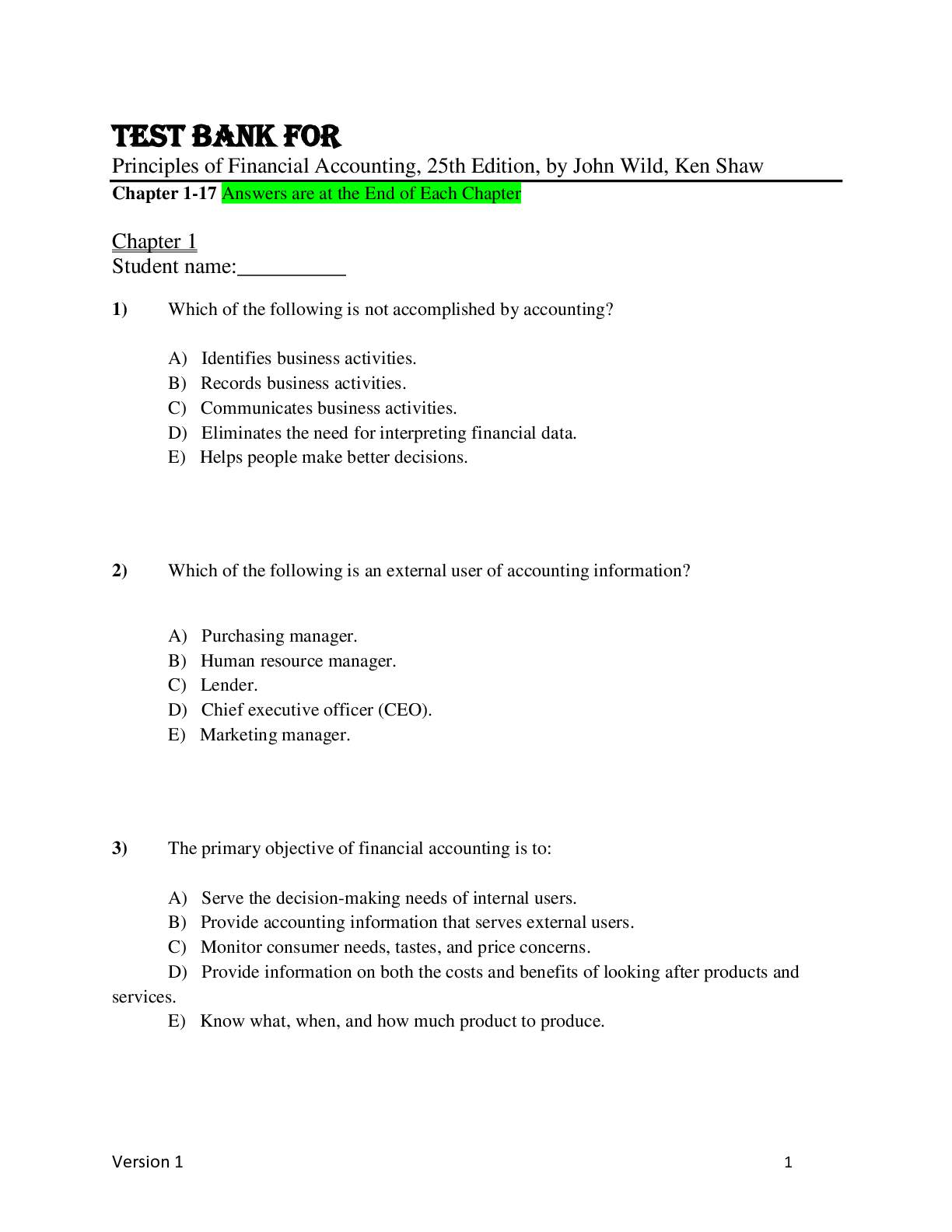


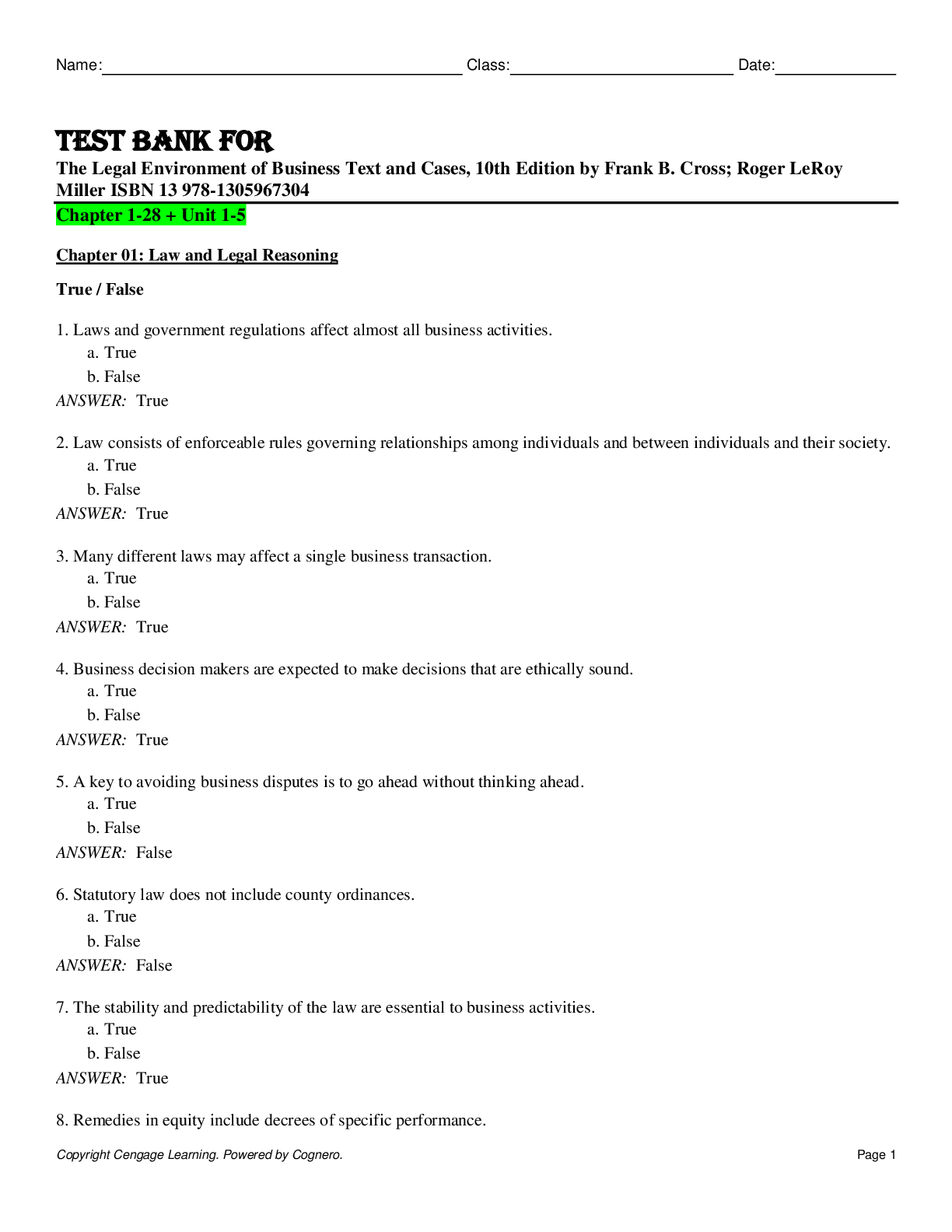

, 10e David Shi, George Brown Tindall.png)

